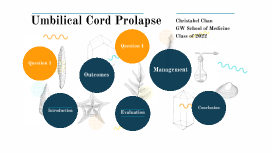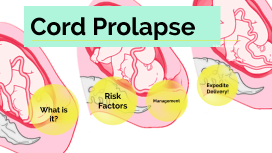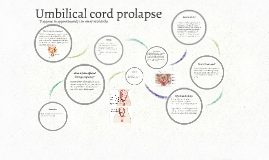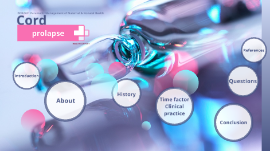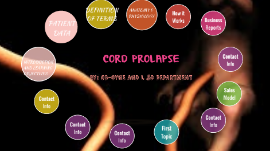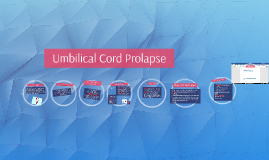Cord prolapse
Transcript: Cord BEH2421 Paramedic Management of Maternal & Nonatal Health prolapse Introduction Student: Afra Saeed AlBaloshi ID : A0032778 (First semester) Submitted to : Scott Cottam The Scope of presentation 1 Physiology and pathophysiology Risk factor & signs & symptoms History taking & resources Time factors during the management Clinical practice guidelines management 2 3 4 How important is cord prolapse to Paramedic Management of Maternal and Neonatal Health? Important About Cord prolapse is an obstetric complication which puts the fetus’s life in danger and is seen in 1 of 300 births (Cleveland Clinic, 2014). Physiology & pathophysiology Risk Factors 1.A long umbilical cord. 2.Malposition of the fetus and small size. 3.Condition called “poly hydramnios”, where the amniotic fluid is more than required in amniotic sac. 4.Pelvic malformations. 5.Multiparty. 6.Cephalopelvic disproportion where the head of the baby is larger than the pelvis ( Woolard, Simpson, Hinshaw and Wieteska, 2010). Sign & Symptoms Only vaginal inspection during the physical examination. If the cord is seen descending the cervix at the vaginal opening, then it is cord prolapse (Queensland Ambulance Service, 2016). History History taking 1. If the delivery is imminent or not? 2. If so, then it is important to know if there are any complications. 3. What the actual date of the delivery and gestation age. 4. Ask if it the first delivery and about any complications faced during previous childbirths. 5. Assessment should be continued on monitoring maternal vital signs 6. SAMPLE (Pollak, Elling & Smith, 2016). Resources available 1. Pillow position 2. Oxygen 3. Sterile dressing 4. Two fingers gently cord can be replaced if it is recommended 5. Caesarean section Time factor Clinical practice Time factors to be considered during the management of cord prolapse Clinical practice guidelines for the prehospital management of cord prolapse The amount of time to be spent on scene depends on the condition of the patient based on the history and physical. If the delivery is not imminent and there is time to reach hospital, transport should be initiated while continuously monitoring the patient. Most of the time, complicated deliveries need caesarean section.(Pollak, Elling & Smith, 2016). 1.TIME CRITICAL transfer. 2. Rapid removal of the patient and quick transfer needs. 3.During transport, main goal is to preserve the blood supply to the fetus. 4. If replacing the cord is not done, cover it with dry paddings to keep it warm and moist within the vagina. 5. Position the mother on the left lateral side with raised pelvis by keeping pillows or pads under the hips. 6.Entonox has to be administered (Brown, Kumar and Millins, 2016). Clinical practice guidelines Video Conclusion https://www.youtube.com/watch?v=df1KR2PC6Ik Questions Brown,S.N., Kumar, D., and Millins,M. (2016). UK Ambulance Services Clinical Practice Guidelines 2016. Bridgwater, TA: Class Professional Publication. Cleveland Clinic. (2014). Umbilical cord Prolapse. Retrieved from https://my.clevelandclinic.org/health/diseases/12345-umbilical-cord-prolapse Pollak,A.N., Elling,B., & Smith,M. (2016). Nancy Caroline’s Emergency Care in the Streets (7th ed.). Burlington, MA: Jones and Bartlett Learning. Queensland Ambulance Service (2016). Clinical Practice Guidelines: Obstetrics/Cord Prolapse. Retrieved from https://www.ambulance.qld.gov.au/docs/clinical/cpg/CPG_Cord%20prolapse.pdf Woolard,M., Simpson,H., Hinshaw,K. and Wieteska,S. (2010). Pre-hospital Obstetric Emergency Training. United Kingdom: Wiley- Blackwell. References






